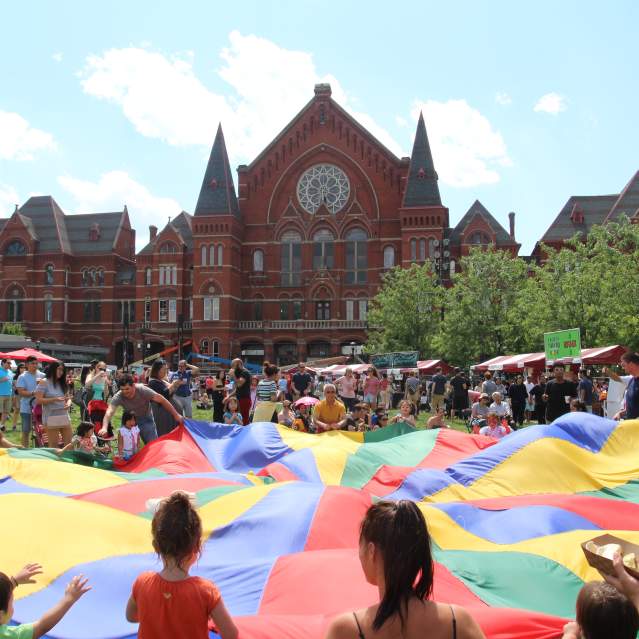Cincinnati and Northern Kentucky were, quite literally, built on beer. By the mid-1800s, 36 breweries produced more than 30 million gallons of beer and had dug underground lagering cellars and tunnels. One batch of lager at a time, Cincinnati’s so-called beer barons turned humble brewing operations into beer-making empires that prospered until Prohibition forced them all to close. Few reopened, and none survived consecutively into the 21st century (after operating for 114 years, Hudepohl Brewing Company closed in 1999).
Now, the number of breweries in Cincinnati and Northern Kentucky has surpassed the number that existed prior to Prohibition. Craft breweries are on the rise across the country, but here it’s more than a trend. It’s a tradition that dates back more than 200 years. From touring original brewery buildings and underground tunnels to tasting freshly brewed beer (and seeing the process), there are countless ways to explore the region’s brewing past and present.
Cincinnati's first brewery
Twenty-five years after the city was settled, Englishman Davis Embree opened Cincinnati’s first commercial brewery on the banks of the Ohio River in 1812. He made classic porters and ales that never quite got popular, and the brewery closed in 1825. Shortly after, waves of German immigrants started establishing roots a few miles north in a neighborhood that would become the heart of the region’s brewing industry.
Discover the historic Over-the-Rhine brewery district
Located north of the Cincinnati stretch of the Miami Erie canal (now Central Parkway), Over-the-Rhine was home to throngs of German immigrants by the mid-1800s. It’s here where the first German-owned brewery opened in 1829, with more following shortly after. Ten years later, a revolution that started back home in Deutschland took hold and changed everything.
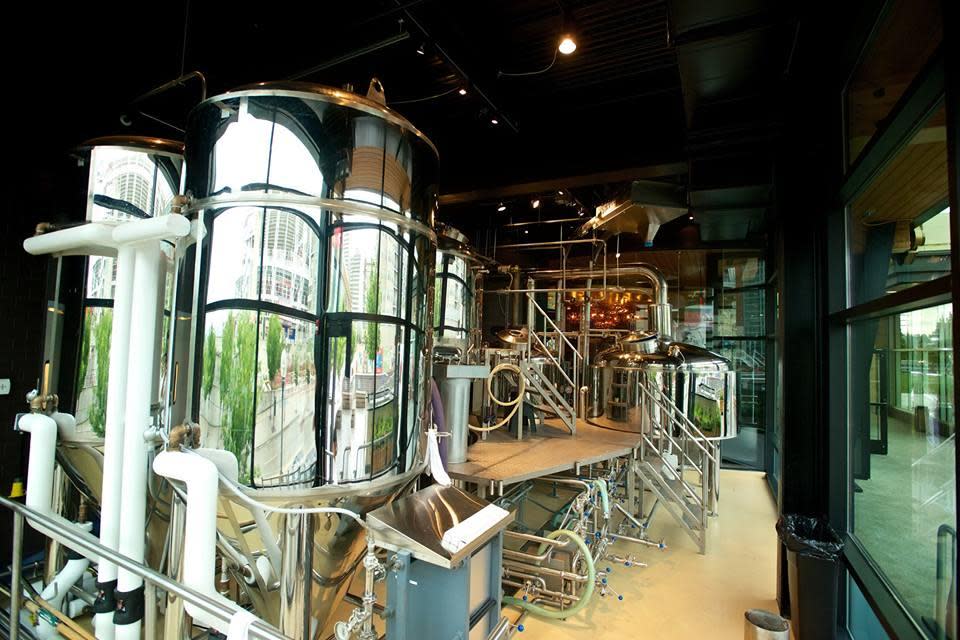
Moerlein Lager House brewing tanks (photo: Moerlein Lager House)
For centuries, beer was made using yeast strains that ferment at the top of the tank, resulting in what we know as ales. In the late 1830s, a new kind of yeast strain that fermented on the bottom was developed in Europe. It took longer and had to be chilled at lower temperatures, but the result was a crisper, mellower beer called lager, from the German lagern, “to store.” The new brew quickly caught on in the states, especially around these parts. By 1850, lager was more than the preferred drink of German immigrants in Over-the-Rhine; it was all of Cincinnati’s beer of choice.
Cincinnati was once named the Beer Capital of the world

Moerlein Lager House (photo: Wendy Pramik)
In 1860, as many as 36 breweries operated in Cincinnati. By 1889, a fewer number of breweries (23) produced even more beer, collectively brewing 35,700,000 gallons of suds drunk the world over (Christian Moerlein Brewing Company exported beer as far as South America and Europe). In fact, so much beer was made and consumed in Cincinnati that in 1890 it was dubbed the “Beer Capital of the World.”

Former brewery site on Brewing Heritage Trail tour (photo: Regional Tourism Network)
The vast majority of Cincinnati’s pre-Prohibition breweries were in Over-the-Rhine, clustered together along McMicken Avenue and the canal. From 1875–1900, 17 operated in Over-the-Rhine and the West End. While this historically German area boasted the most breweries per capita, it wasn’t the only neighborhood where the air smelled of liquid bread and the beer flowed freely.
Beer and bourbon in Northern Kentucky
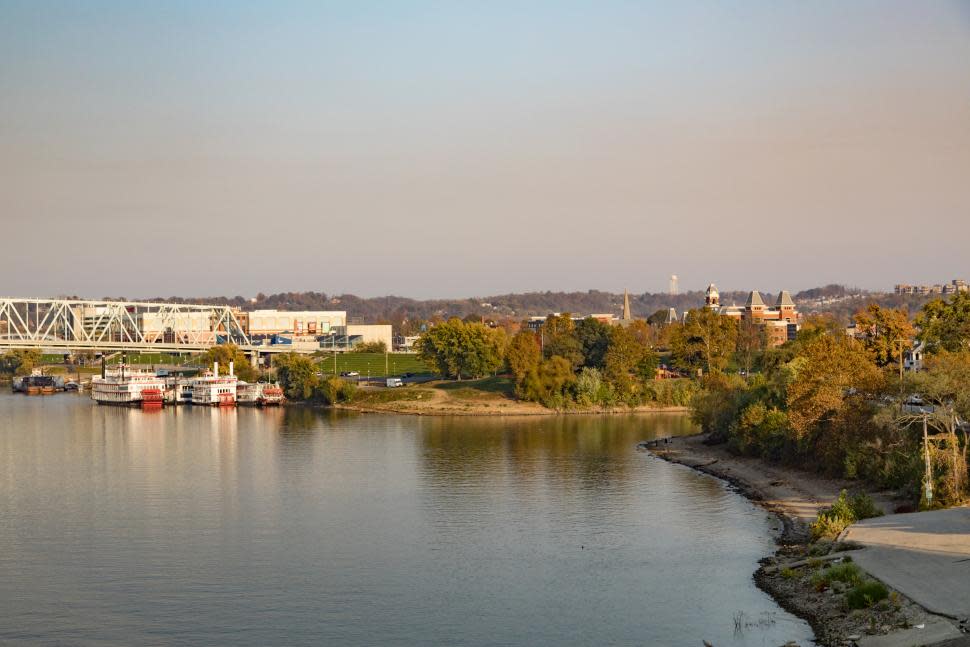
View of Northern Kentucky (photo: Regional Tourism Network)
George Wiedemann worked at the John Kauffman Brewing Company in Over-the-Rhine for 15 years before moving across the river in 1870 to start his namesake venture in Newport. George Wiedemann Brewing Co. was Kentucky’s largest beer producer in 1890, followed closely by Bavarian Brewing Company in nearby Covington. The original Bavarian Brewery is the only thing that remains of Northern Kentucky’s brewing heritage. You can find the faded yellow building, complete with original brickwork, at 528 W. 12th St. in Covington. The building now serves as the home of Kenton County's administrative offices.

Boone County Distilling (photo: Boone County Distilling)
Pre-Prohibition Brewery Architecture in Cincy

Prohibition Resistance: Lager Tour (photo: Steven Hampton)
Back in Over-the-Rhine, a more
intact historic brewing district astounds with its architectural prowess. As it turns out, Cincinnati’s brewing industry was as much about beer as it was about world-class architecture. Brewery buildings were considered extensions of the beer, and architectural details were often exaggerated in advertisements. That’s not to say the expansive brewing complexes weren’t lavish in real life. In 1893, George Wiedemann hired Cincinnati architects Samuel Hannaford and Sons (of Music Hall fame) to construct a new bottling facility. The building, since torn down, once towered majestically over Sixth and Columbia Streets in Newport.
The most intact building remaining is the old Felsenbrau-Clyffside Brewery (1887). From across the street, gaze at the meticulously carved cherubs and six-point brewer’s star on the roof. Inside, notice the beer barrels etched into the stair posts, and gilded steel beams that sparkle in the natural daylight. Ascend to the top-floor grain room and you’ll find pulleys caked with decades of rust hanging from the ceiling and a dusty metal grain bin in the floor. Considering it’s been abandoned off and on for a few decades now, this building is in pretty remarkable shape. What lies beneath is in even better shape.
Digging Up the Past in Cincinnati’s Underground Lagering Tunnels

Queen City Underground Tour (photo: Dan Ledbetter Photography)
Somewhere between Prohibition, two world wars and urban sprawl, the tunnels beneath Over-the-Rhine, Newport, and Covington that brewery workers used to access lagering cellars and transport goods between buildings were all but forgotten. Then in 2008, urban explorers came across original brewery blueprints, curiosity led to jackhammering, and the tunnels were rediscovered.
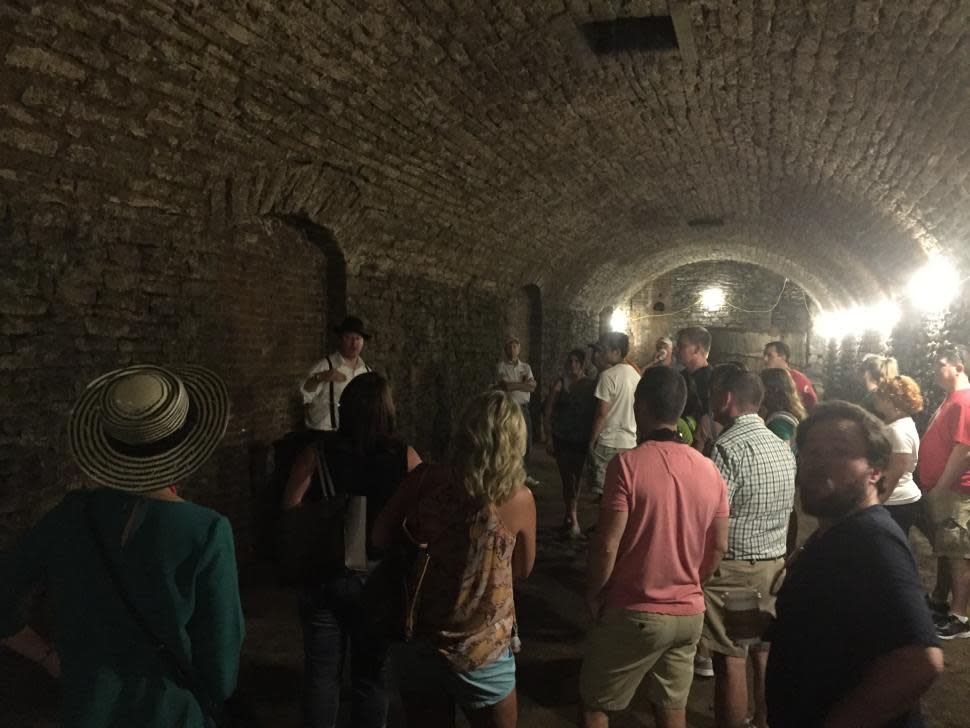
Under the Market Tour
You can see the curious underworld for yourself on a Brewing Heritage Trail Tour. One tour ends in a cellar beneath the original Kauffman Brewery malt house. Built in 1860, Kauffman grew to be the fourth-largest brewery in Cincinnati but never reopened after Prohibition. Now, that cellar is finally getting a new lease on life, as are other historic brewing structures and brands. Or visit the latest tunnels to be rediscovered on American Legacy Tours' Under the Market Tour.
Craft beer is booming in the Cincy Region
Cincinnati and Northern Kentucky’s past is now its present, just waiting to be explored. On a brewery tour in Over-the-Rhine, see one of the largest collections of pre-Prohibition brewery architecture. Given the region’s storied brewing history, collecting vintage beer memorabilia, or breweriana, is also a popular hobby here. So much so that there’s a Queen City Chapter of the Brewer’s Collectibles Club of America, which annually hosts shows open to the public (queencitychapter.com).

Brink Brewing (photo: White Lotus Photography)
Along with the existing tours, the Brewing Heritage Trail highlights historic buildings and sites in Over-the-Rhine. And be sure to stop by some of the local breweries where you can take tours and clink pints.
Written by Cait Barnett, updated by Laura Barfield
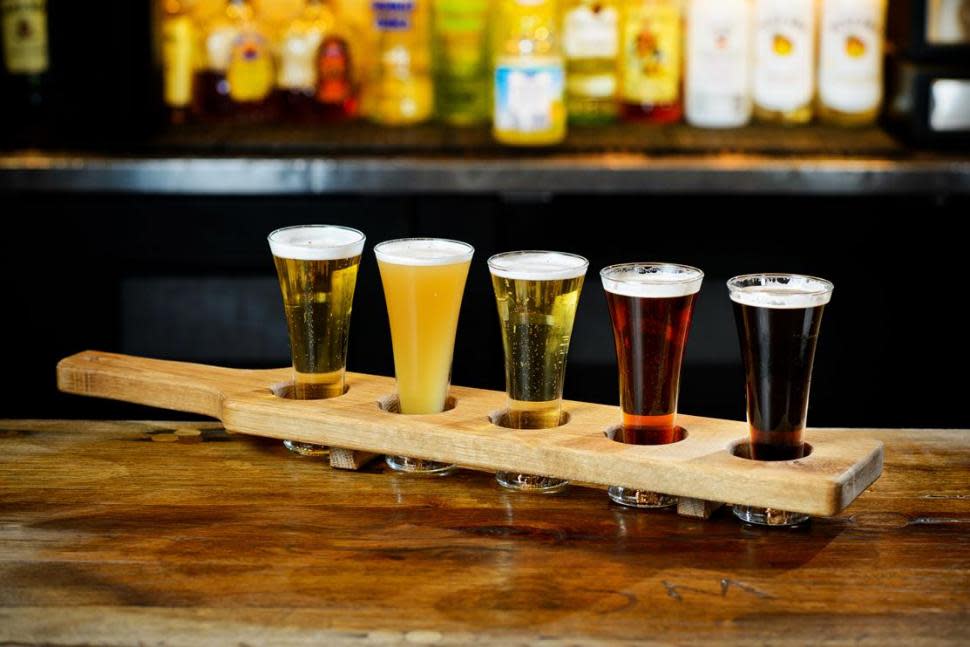 Hofbrauhaus Beer Sampler (photo: Hofbrauhaus)
Hofbrauhaus Beer Sampler (photo: Hofbrauhaus)







 Queen City Underground Tour (photo: Dan Ledbetter Photography)
Queen City Underground Tour (photo: Dan Ledbetter Photography)



